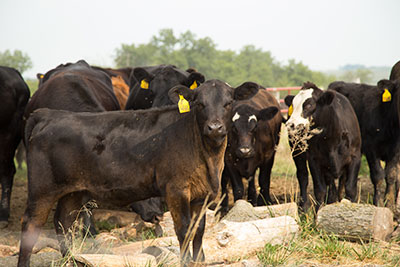Cow/calf producers retaining 1.2% more heifers than previous year.

The U.S. Department of Agriculture released its comprehensive “Cattle” report on Jan. 31, providing estimates of the inventory for all cattle and calves, the 2016 calf crop, beef and dairy cow inventories, as well as a variety of other inventory estimates that may foster a better understanding of the U.S. cattle industry's direction.
According to Purdue University agricultural economist Jim Mintert, this year's report was of particular interest because of the 2016 collapse in both fed and feeder cattle prices.
“The dramatic price decline and resulting falloff in profitability by cow/calf producers led to questions about possible impacts on industry expansion,” he said. “Last week's report leaves little doubt that the industry is still in expansion mode — at least for now.”
USDA estimated the Jan. 1, 2017, inventory of all cattle and calves to be 93.6 million head, 1.8% larger than a year earlier and nearly 6% larger than it was at the bottom of the cycle; this inventory bottomed out on Jan. 1, 2014, at 88.5 million head. Overall, the total inventory increase was in line with most pre-report expectations.
Last year, USDA eliminated its midyear “Cattle” report, which was typically published in July. As such, last week's report provided the first estimate of the 2016 calf crop, which was estimated at 35.1 million head — 2.9% larger than in 2015. The smallest calf crop of this cycle occurred in 2013, and the 2016 calf crop was nearly 5% larger than in 2013.
Mintert said the beef cow inventory and the number of heifers being held for future replacement or entry into the herd are key to future cattle and beef supplies. USDA estimated the beef cow herd to be up 3.5% compared to a year earlier and more than 7% larger than at the inventory cycle's bottom in January 2014.
Despite the fall-off in prices during 2016, Mintert said cow/calf operators indicated that they are holding back 1.2% more heifers for herd replacement this year versus last year. “That combination means the supply of cattle for slaughter will continue to increase not just in 2017 but also into 2018-19,” he noted.
Commercial cattle slaughter and beef production both increased just more than 6% during 2016 compared to 2015.
“Cattle slaughter and beef production are both expected to increase again during 2017, although the year-over-year percentage changes are likely to be smaller, perhaps falling in a range of 3-4%,” Mintert said.
Larger supplies imply that lower prices are ahead, he added.
Prices for slaughter cattle in the southern Plains averaged approximately $121/cwt. (live weight) during 2016, which was 19% lower than during 2015. In 2017, Mintert suggested that slaughter cattle prices could decline another 6-8% as a result of the expected supply increase.
He also pointed out that the decline in calf prices during 2016 was even more severe than the decline in slaughter cattle prices. Prices for 500-600 lb. steers in the Kentucky market averaged $153/cwt. during 2016, down 36% from a year earlier.
“Lower slaughter cattle prices during 2017 are expected to exert more downward pressure on calf prices,” Mintert said.
Recent weekly average prices in Kentucky for 500-600 lb. steers have been in the upper $120s, and the annual average for these steer calves could wind up in the low $120s — 15-20% lower than the 2016 annual average.
In the “Daily Livestock Report,” Steiner Consulting Group (SCG) said 2017 is a critical year and is likely to be one of transition to slower growth for the U.S. herd.
“Lack of cow/calf operation profitability is quickly slowing producers' interest in increasing the size of their cow herds,” SCG noted.
Forage conditions this spring and summer could also influence producer decisions, the group added.
SCG said since cow/calf producers are holding about 1% more heifers for beef cow replacement purposes than a year ago as of Jan. 1, it sets the stage for the national cattle population to be a bit larger on Jan. 1, 2018.
“How large cow and heifer slaughter levels are above 2016 (levels) will be important,” SCG said.
About the Author(s)
You May Also Like

.png?width=300&auto=webp&quality=80&disable=upscale)

